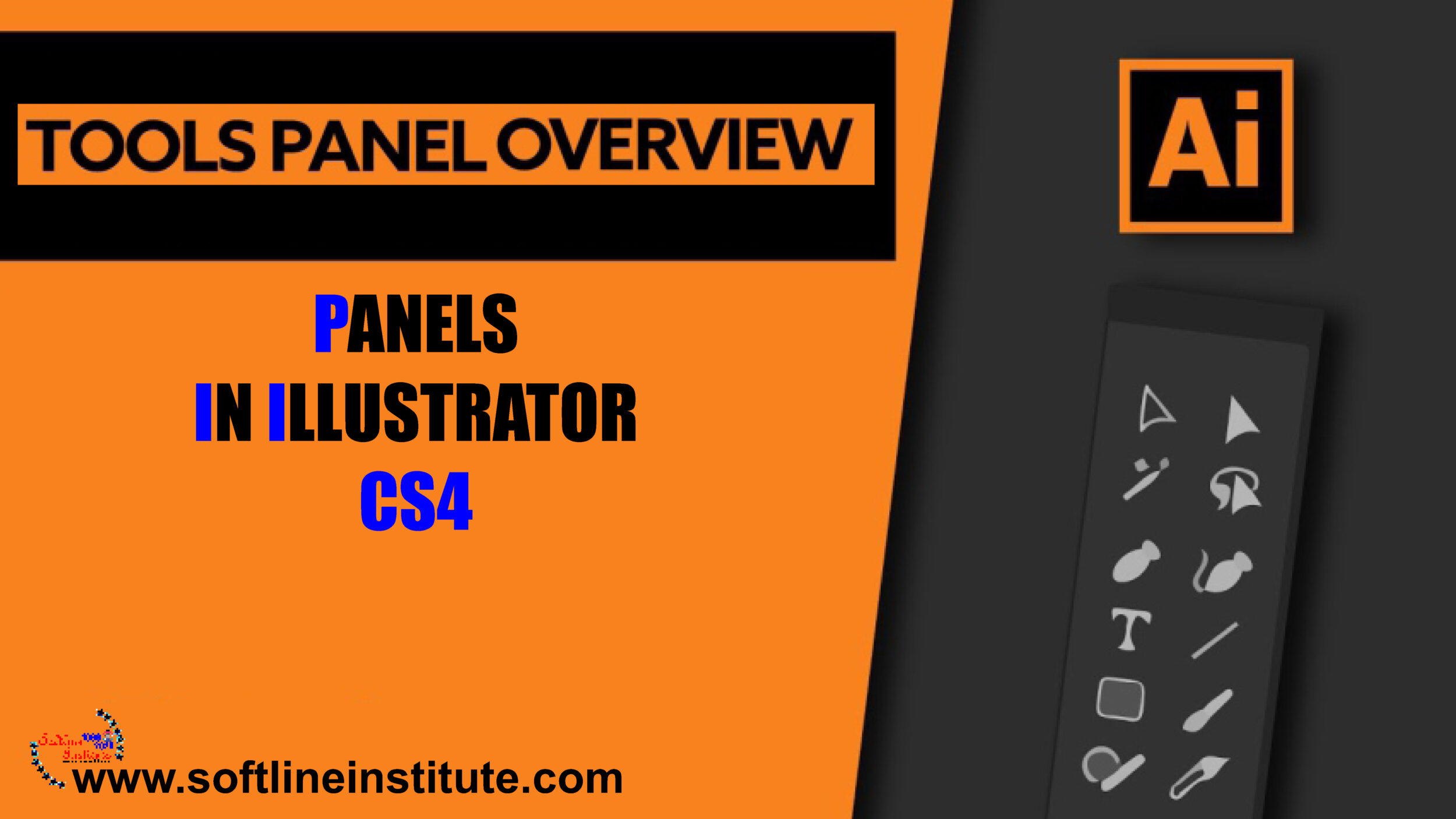Using the panels
Panels are small windows that are similar to dialog boxes. Panels can float or be docked. To make the following discussion a little more readable. I’ll refer to both as panels; they’re mostly interchangeable terms when discussing how they work and the contents of each of them.
Panels allow you to control virtually every aspect of the Illustrator drawing environment. Illustrator has 34 standard panels and an unlimited number of library panels (for swatches, symbols, brushes, styles and more), all of which can remain open while you work on your document panel.
Technically speaking a Panel is a modeless window. The big difference between a modeless window and a dialog box is that you don’t have to close the modeless window to perform other tasks. Therefore, you can work with the features on one panel without having to close another panel.
Panels are like regular windows in many ways. Each panel has a title bar that you can click and drag to move it. The title bar also has buttons for minimizing a regular panel or zooming (back to regular size) a minimized one and closing the panel. Each panel also has a tab with the name of the panel within it.
Some Available Panels:
| Actions | Use this panels to record a sequence of events to play at a time |
| Align | This panel lets you align objects (Shift+F7) |
| Appearance | Use this panel to check the attributes of a selected object (Shift+F6) |
| Attributes | Use this panel to view the overprinting and any URLs associated with the selected object (Ctrl+F11) |
| Brushes | Use this panel to choose a brush type (F5) |
| Color | The panel lets you apply color to your illustrations(F6) |
| Color Guide | This panel lets you access the Live Color feature (Shft+F3) |
| Control | This is the panel along the top edge of the document window. |
| Document Info | This Panel shows information about the document such as color mode, Artboard dimensions, and other options. |
| Flattener Preview | Use this to see certain areas of flattened artwork. You can also adjust the Flattener options here. |
| Gradient | This panel is used for changing and applying gradients (Ctrl+F9) |
| Graphic Styles | This panel lists the default graphic styles and let you save the graphic styles (Shift+F5) |
| Info | This panel displays information on the selected objects. It is used for measuring objects or distance (F8), among the things. |
| Layers | This panel lets you put the objects on the different layers for easier organization (F7) |
| Links | This lists the placed objects that are linked to the document |
| Magic Wand | Use this to adjust the settings for the Magic Wand Tool. |
| Navigator | Use this to quickly move around a large document |
| Pathfinder | Use this to combine, split, divide, and do more to multiple paths (Shift+Ctrl+F9) |
| Separations Preview | Use this to view the individual printing plates in your document |
| Stroke | This panel let’s you adjust the width and style of the stroke (Ctrl+F10) |
| S V G Interactivity | Use this panel to set options for Scalable Vector Graphics |
| Swatches | This panel houses preset colors, gradients, and patterns |
| Symbols | This panel houses presets symbols and lets you define new symbols (Shift+Ctrl+F11) |
| Tools | This panel contains all of Illustrator’s tool |
| Transform | This panel let you move, scale and apply other transformations (Shift+F8) |
| Transparency | Use this panel to adjust the opacity of objects (Shift+Ctrl+F10) |
| Type | Use this panel to adjust a variety of type options, Including; – Character (Ctrl+T) – Character styles – Glyphs – Open Type (Alt+Shift+Ctrl+T) – Paragraph (Alt+Ctrl+T) – Paragraph Styles – Tabs (Shift+Ctrl+T) |
| Variables | This panel is used to set the options for the data-driven graphics |
